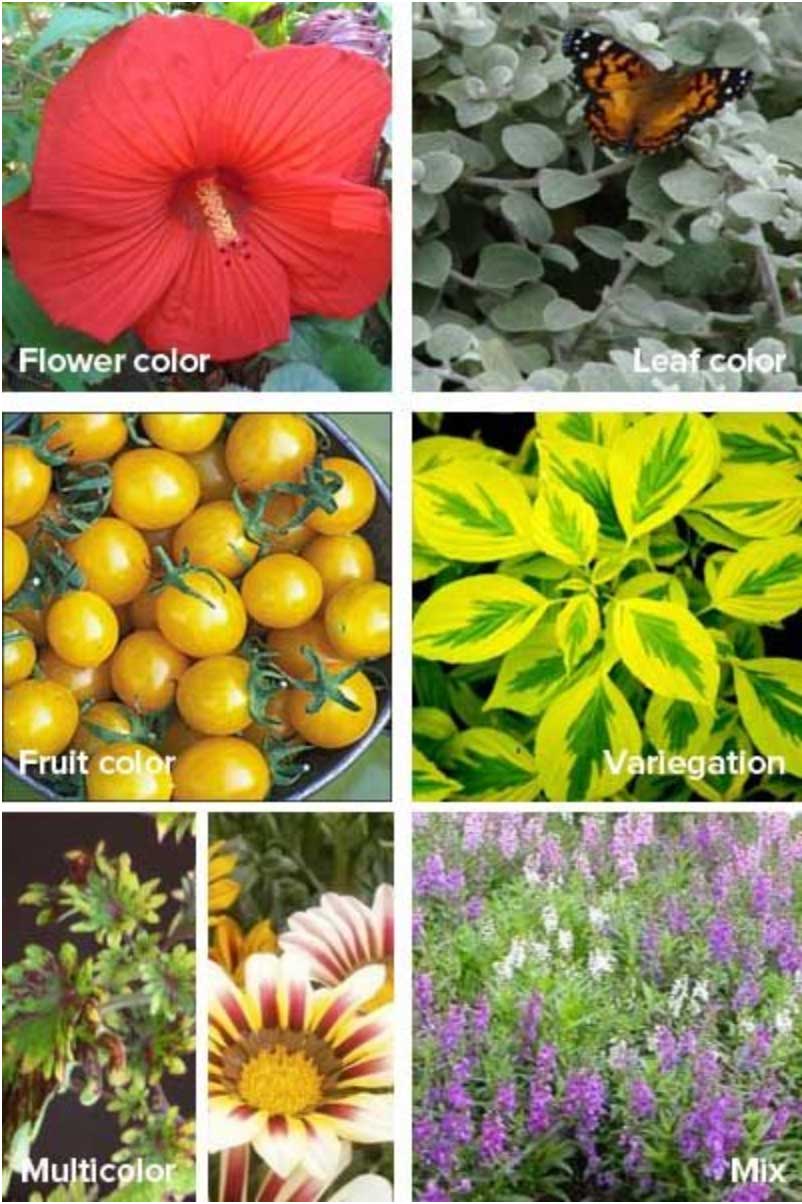 When you search for plants our website, you can filter by color. We've identified each plant by its most significant colors — the colors you as a gardener would want to know about the most.
When you search for plants our website, you can filter by color. We've identified each plant by its most significant colors — the colors you as a gardener would want to know about the most.
That can mean:
- Flower color, if the flowers are significant to the plant's appearance. For instance, yellow would not be listed for tomatoes even though they have yellow flowers, because that isn't usually important to gardeners.
- Fruit color. You do want to know if a plant has yellow tomatoes vs. green or red, for instance.
- Leaf color. Examples: yellow-green, silver, red or (almost) black.
- Variegation, which is included as a color, whether green and white, green and yellow-green, or any other combination.
We use multicolor to describe plants that have blooms of more than one color, where no single color is dominant.
We use variegated to describe the leaves of plants that are more than one color. One exception to this: We use multicolor to describe plants that are more colorful, such as coleus, rather than variegated.
We use "mix" when there is actually more than one plant being sold, as in a 4-pack with a range of flower colors, or when the plant could be one of several colors because the grower used seed from plants with more than one color.
We don't list green as a key color unless it's unexpected for the plant — green tomatoes or green flowers, as on Lime flowering tobacco, for instance. But green leaves are to be expected, so we don't note that.
Questions or suggestions on better ways to use the key color feature? Send us a note.